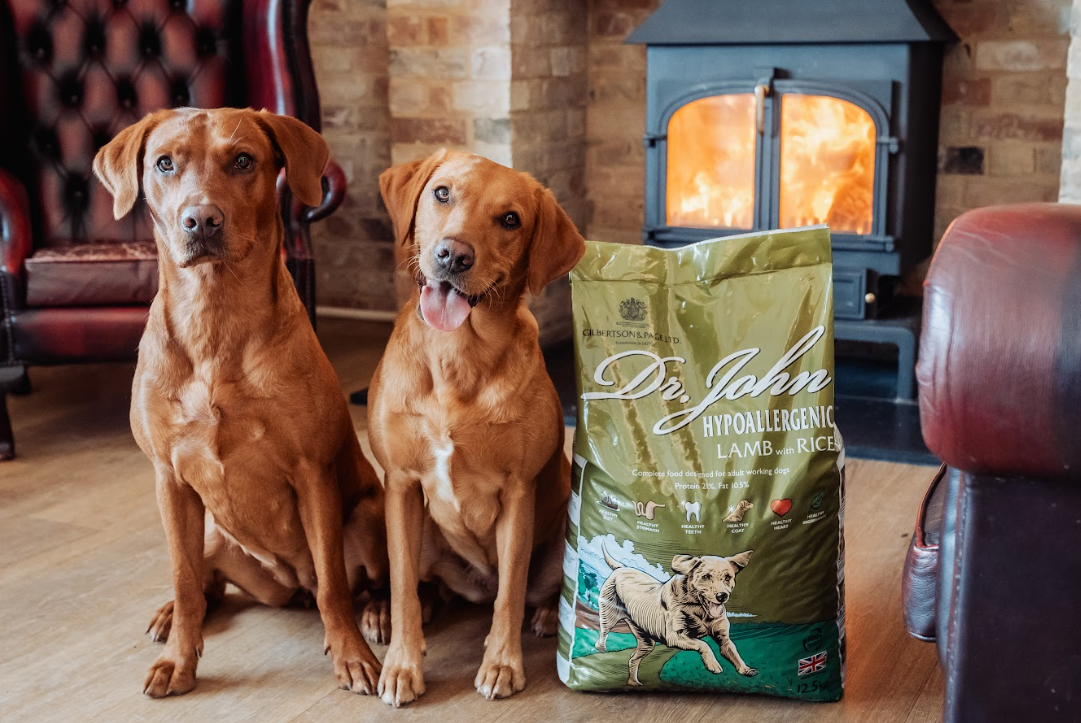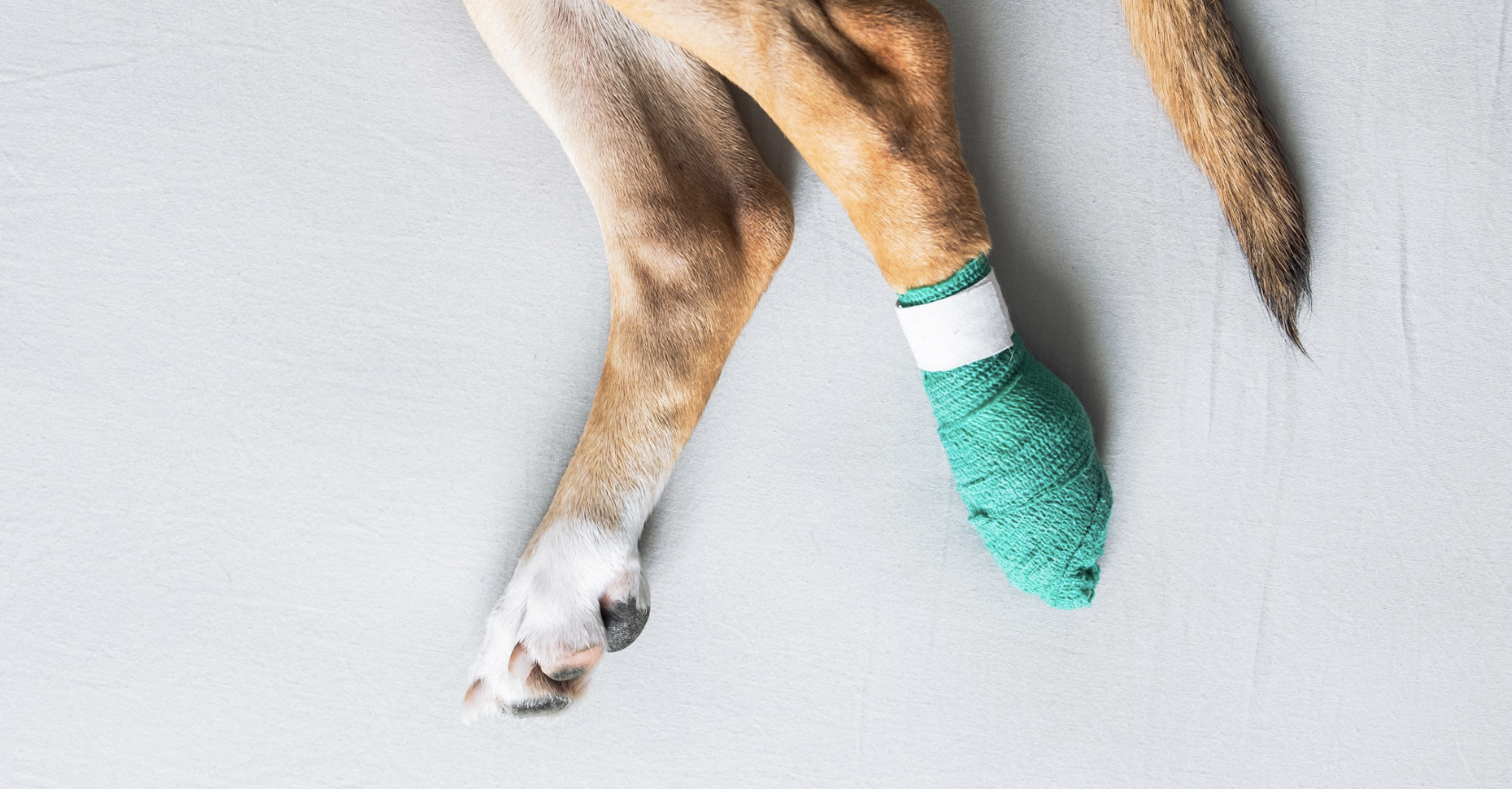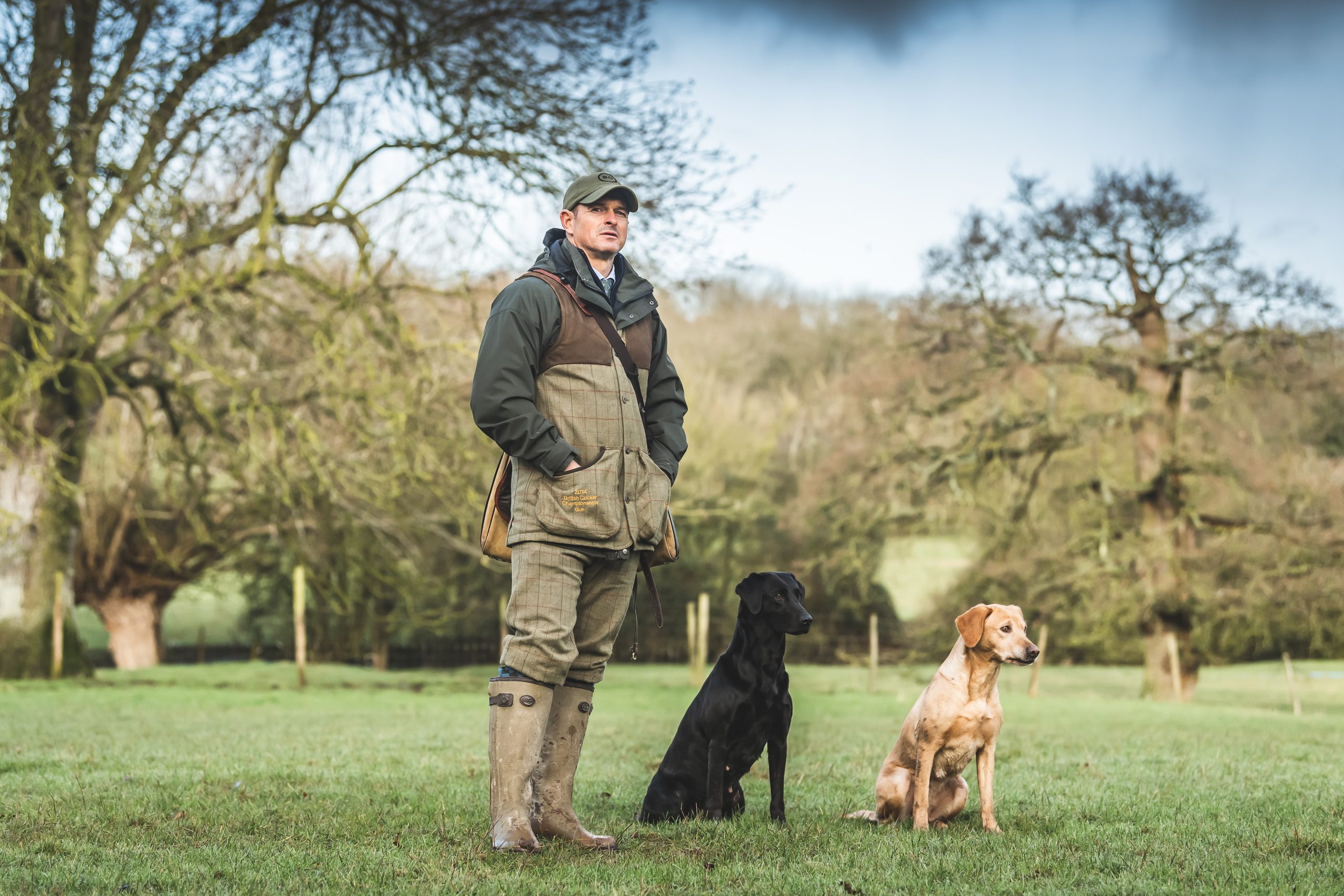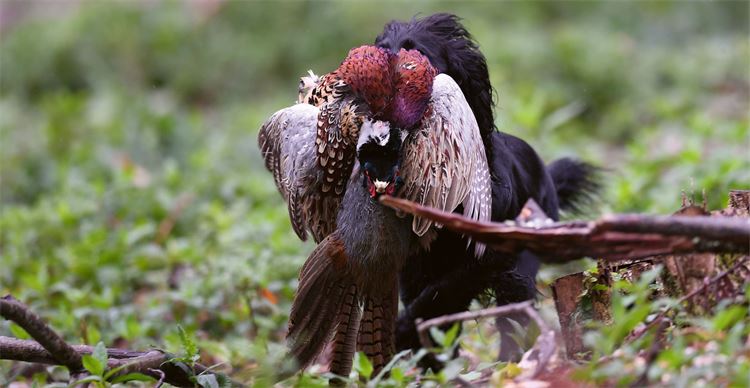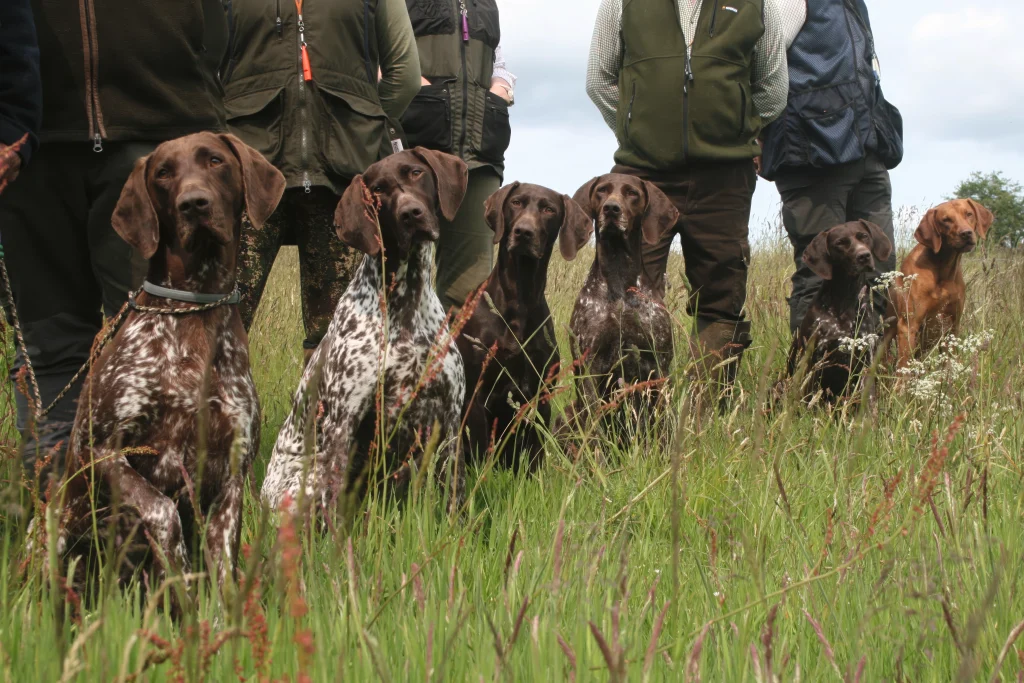How far will your dog go for you?
What sort of distance do our dogs cover and how can we prepare them for the challenge? Simon West investigates.

The same conversation takes place on shoot days all around the country. Two pickers-up are watching their dogs working and wondering just how far their dogs go during the day of relentless work over the fields, in the woods and overthe hills.
Until very recently that answer lay solely with the dog. Now with highly accurate wearable GPS trackers, it’s possible to answer the question. So that’s what we set out to do by tacking one picker-up and two springer spaniels during a shoot day. Tracking the picker-up was done (apart from finding out if she got lost again) purely to give a comparison for our two working dogs.
Tracked-up
First we needed trackers. After doing online research to find a waterproof product that would work on dogs in the middle of a field miles from nowhere, we narrowed the search to a few specialist pet trackers and reached out to manufacturers for help.
Tractive kindly provided us three of their dog trackers for the test. These trackers work using a combination of GPS and GSM (mobile phone) signals. The GPS bit tells the tracker where it is and the GSM bit uploads that data to the internet so you can see the location data on your mobile phone. The tracking data is also recorded, allowing you to see where you and your dogs have been during the day.
We found that the trackers were accurate to a couple of feet, making them ideal to locate a dog gone missing on a drive – just whip out your phone and their location shows on a satellite map which conveniently also shows your own phone location.
The only drawback with this type of tracker is it needs mobile phone coverage (Ed. Even in 2020 there are still plenty of remote valleys on shoot days with no phone signal). There are other trackers that don’t need mobile coverage, but they don’t have the other features we needed for this test.
How far?
All drives and dogs are different, so we used the trackers on different drives and different shoot days to get an average across a few locations. It was expected that the bigger the drives, the more ground the dogs would cover, but what surprised us most was just how far the dogs went even on small drives, comprising a field and a small wood. On a typical drive a picker-up will cover around half to one mile and each dog between two and three miles. On bigger and longer drives with large woods or big fields to cover, the dog could run up to four miles. Meaning that on a four drive day each dog will cover around 10 miles if they are smaller drives and more than 16 miles if they are larger drives and they will easily reach speeds of 20mph.
Now factor in that they are running that distance over muddy fields, over obstacles, up and down hills and often carrying heavy game birds. On top of that they are using all their faculties to find dead birds and chase runners. A cock pheasant can weigh almost two kilograms so that’s the equivalent to a human of carrying anything up to 10 kilograms, or even more depending on breed. No wonder they are tired at the end of a day.
Preparation
If you are preparing your dogs to cover this sort of distance twice or more each week, what can be done to give them the best chance of staying healthy and free from injury?
Imagine you are preparing yourself to run a half marathon across muddy fields. You’d want to get strong and fit. The same is true for your dogs. Summer training is a great way to get your dogs ready for the season. Chris Green, retired gamekeeper and long time working dog trainer offers some advice: “Dogs gain fitness far more quickly than humans, but they still need to get fit for a long season picking-up. Cockers and smaller springers pick up fitness and muscle tone quickly but larger spaniels and bigger breeds need a lot more work to get them fit for the season.
“Dogging-in is great preparation for your dogs. Once gamekeepers have released their young birds, the birds tend to go walkabout. Each morning the keeper and willing volunteers will work around the shoot boundaries pushing birds back in the right direction. Your local gamekeeper may well welcome you and your picking-up dogs to help. Dogging in also allows you to reinforce your summer training on live birds before the season begins.
“Think of dogging-in like beating. You are moving the birds from heading towards the edge of the shoot. These are not bright birds; once they have been turned around, they tend to carry on in the same direction. So your goal is to push birds back towards their home. Another way you can get your dogs fit is to train them in thick, long grass, bracken or heavy undergrowth. The dog has to push their way through, which builds up their strength and stamina fast.”
Get the basics right
Chris continues, talking about training your picking-up dog. “Just like your car, make sure the brakes work! Get the basics into your dogs so they will stop immediately on your command whether voice or whistle and make sure they still come back to you even with shoot day distractions. Training them to handle left, right and back is good, but nowhere as important as being able to stop them reliably. I’d always suggest joining a gundog club where you can practice and get advice. Aside from anything else, it’s great fun and so much easier if someone else throws the dummies!”
Feeding the beast
Anecdotally increasing numbers of working dogs are being fed raw food with reports of healthier dogs, glossier coats and fewer visits to the vets. Raw food is available pre-packaged and frozen from many suppliers online.
Another raw food option is to take pheasant carcasses, remove the breast for your dinner and mince the remainder of the carcass with some tripe – the tripe being so the dog does not get a taste for pheasant meat. This is a great way to reduce food miles and put every part of the pheasant and partridge to good use.
If raw food is not your thing, many manufacturers now offer specific working dog mixes.
On each shoot day a few other food tricks can help your dogs. Giving them food after the first couple of drives keeps their energy up. Bring some raw chicken wings with you for a lunchtime snack – or “borrow” sausages from the guns’ lunch for your dogs.
Dogs can suffer from low sugar induced fits towards the end of the shoot day if they have been working hard. Carry a packet of glucose tablets that you can quickly dissolve into their water if they show signs of fitting.
Preventing injury
Some injuries can’t be avoided but many can be prevented with a bit of thought. Working dog injuries are often similar to those suffered by rugby players usually with names starting with “Over use of…” and caused by working too many days each week – especially days in a row.
Give your dogs some rest or rotate them on alternate drives. Now you know they are running a half marathon every shoot day, you can cut them some slack.
Early in the season another hazard is stinging nettles. We’ve all seen dogs scrabbling on a hard floor with stung paws after a shoot day, but some can suffer a reaction to nettles that can be treated with antihistamines designed for us humans.
Recovery after a long day
Spaniels are famously hardy and the adrenalin rush of an exciting shoot day means they will keep going even after the final bird is collected on the last drive, regardless of how many miles they have covered. Give your dogs a comfortable rest after their day out. When you get back to your car, dry them off. We then put them in fleece coats with velcro straps under their chest to finish drying them off and get them warm especially on a wet or cold day.
When you get home, check your dogs over carefully for thorns, cut paws and ticks then check they are not limping or favouring one leg. A sure sign they have a thorn in their paw is when they regularly lick the same place.
Your dogs are the product of both natural selection and selective breeding to give them the physical characteristics needed to run a half marathon carrying heavy birds. But there is lots you can do to help get them ready and keep them fit.
Related Articles
Get the latest news delivered direct to your door
Subscribe to Gundog Journal
Unlock the full potential of your working dog with a subscription to Gundog Journal, the UK’s only dedicated magazine for gundog enthusiasts. Published bi-monthly, this authoritative resource delivers expert training advice, in-depth interviews with top trainers and veterinary guidance to help you nurture a stronger bond with your dog.
With stunning photography and thought-provoking content, Gundog Journal is your essential guide to understanding, training and celebrating your working dog.
Save 10% on shop price when you subscribe, with a choice of packages that work for you. Choose from Print & Digital or Digital only with each journal delivered directly to your door or via the app every other month, plus access to past issues with the digital back issue library.



